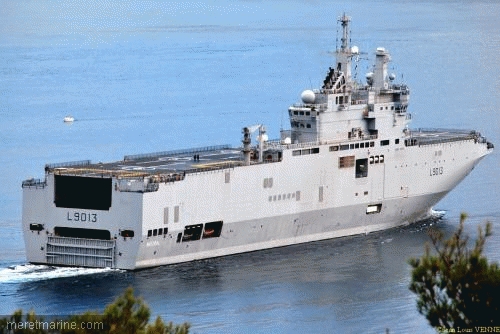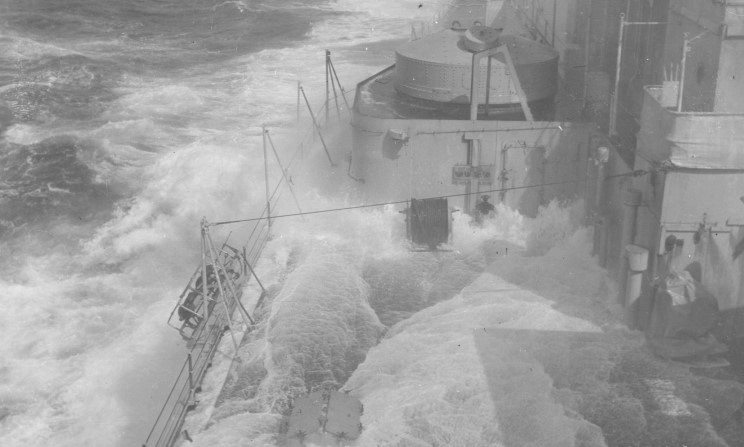
Welcome to MSW’s Scuttlebutt! Here’s the news for the day.

Feature - Making a Water Base
MSW Crew member Kenny Loup shares with us his technique for Making a Water Base.

Construction Starts on Portsmouth’s New Island
Source: BAE Systems
PORTSMOUTH, United Kingdom --- Construction on the forward island structure for the first Queen Elizabeth Class aircraft carrier began today at BAE Systems’ facility in Portsmouth Naval Base.
Employees and guests watched as Second Sea Lord and Commander in Chief Naval Home Command, Vice Admiral Charles Montgomery CBE ADC cut the first steel, formally marking the start of production on the island structure. Housing the bridge and navigation systems for the Queen Elizabeth Class aircraft carriers, the forward island is fundamental to the effective command and control of the vessel. The island also includes the vessel’s long range radar, providing wide area surveillance up to 400 kilometres.
Vice Admiral Montgomery said: “I am pleased to start official construction for HMS Queen Elizabeth’s forward island. The Queen Elizabeth Class will be joint assets for defence and, as such, will be a fundamental component of the UK’s joint capability over the coming decades.
“By routinely carrying a Joint Force Air Group they will deliver air power from the sea wherever and whenever required and in a stronger and more decisive form than ever before. They will undoubtedly prove a tremendous asset for promoting and protecting Britain’s national and global interests. Real progress is being made on this project and I look forward to seeing the next major block, Lower Block 03, arrive in Rosyth in August.”
Geoff Searle, Queen Elizabeth Class Programme Director for the Aircraft Carrier Alliance, said: ”Today's steel cut demonstrates the huge amount of momentum behind the Queen Elizabeth Class programme. With all but one section of the ship now in production, we are seeing significant progress, with thousands of people across the country working to deliver the nation’s flagships to our armed forces.”
Designed with a twin island configuration, the Queen Elizabeth Class will benefit from its flying operations being separated from the running of the vessels, resulting in maximum flexibility and greater control of flight deck operations. BAE Systems will also undertake the build of the aft island, which will be responsible for all air operations and air traffic control, with production expected to start in the autumn.
Today’s steel cut is the latest achievement in the programme and comes just two weeks after all of the rings of Lower Block 02, the forward hull section being built at Portsmouth, came together for the first time. Meanwhile, workers at the company’s Govan shipyard are gearing up for the departure of Lower Block 03 for transportation to Rosyth in August.
As a member of the Aircraft Carrier Alliance, BAE Systems is working in partnership with Babcock, Thales and the Ministry of Defence to deliver the biggest and most powerful surface warships ever constructed in the UK. The company provides overall leadership and programme management to the QE Class programme, as well as playing a central role in the design and build of the ships. BAE Systems is also responsible for the design, manufacture and integration of the complex mission systems for the aircraft carriers.
Each 65,000-tonne carrier will provide a four acre military operating base that can be deployed worldwide and will be versatile enough to be used for operations ranging from supporting war efforts to providing humanitarian aid and disaster relief. The QE Class will be the centre piece of Britain’s military capability and will operate at least 12 of the carrier variant Joint Strike Fighter jets, allowing for unparalleled interoperability with allied forces.
BPC Dixmude in Toulon for Combat System Integration and Testing
Source: DCNS
Today, 13 July, BPC Dixmude – the third Mistral/BPC-type force projection & command vessel for the French Navy – arrived in Toulon after sailing from Saint-Nazaire on 6 July. Over the coming six months, DCNS will settle the ship’s combat system. The ship will be delivered to the French defence procurement agency DGA in early 2012.

DGA ordered BPC Dixmude in April 2009 as part of an economic stimulus package proposed by French President Nicolas Sarkozy. The resulting industrial cooperation programme was awarded to DCNS and STX France and the platform built at the STX France shipyard in Saint-Nazaire in cooperation with DCNS.
Over the coming six months, DCNS will settle the combat system which includes the communications, navigation and combat management systems. Successful integration hinges on value-adding expertise every step of the way. The work will be performed by teams of experts – about 100 people in all – provided by DCNS and its partners. These are vital to operational missions and represent around one-quarter of the ship’s total value.
BPC Dixmude is scheduled for delivery to the DGA in early 2012 and for entry into active service later in the year. BPC Mistral and BPC Tonnerre, the first two Mistral-class force projection & command vessels, were built by DCNS and the then-Chantiers de l’Atlantique and delivered to the Navy in 2006 and 2007 respectively.
On 17 June, DCNS signed a contract with Russian defence export agency Rosoboronexport for the supply of two Mistral/BPC-type vessels and associated services including initial logistics, training, and technology transfers. This is the first export success for the Mistral/BPC design. On the international market, the type is known as a landing helicopter dock or LHD. The first ship will be delivered to Russia in 2014, just three years after the contract go-ahead. The second will be delivered in 2015.
With a length of 199 metres, a displacement of 21,500 tonnes and a speed of 19 knots, BPCs offer a global projection capability for troops and materiel including 450 troops and 16 heavy helicopters plus one of several options: two hovercraft, two new-generation EDA-R high-speed landing craft, four LCM-type landing craft or one-third of a mechanised regiment complete with armoured vehicles (representing a payload of 1,000 tonnes). BPCs also offer ample capacity as hospital ships or for large-scale humanitarian missions.
The design features electric propulsion using azimuth pods and high-level automation compatible with a complement of just 170. A high-performance communications suite, a 3D surveillance radar and a Senit 9 combat management system (CMS) make the type ideal as a naval force command vessel.

Battle of Cape Spada
Yesterday was the anniversary of the Battle of Cape Spada.

HMS Dreadnought
Today’s website is HMS Dreadnought. Enjoy.
This Day in U.S. Naval History
1846 - First visit of U.S. warships (USS Columbus and USS Vincennes) to Japan is unsuccessful in negotiating a treaty.
1960 - In first launch of Polaris missile, USS George Washington (SSBN 598) successfully fires 2 operational Polaris missiles while submerged off Florida.
1964 - Four Navy divers enter Project SEALAB I capsule moored 192 feet on the ocean floor off Bermuda for 11 day experiment.
1969 - Former Navy pilot Neil Armstrong is first man to set foot on the moon, announcing, "that's one small step for man, one giant leap for mankind." Armstrong was Commander of Apollo 11 which during its 8 day mission landed on the Sea of Tranquility. Recovery was by HS-4 helicopters from USS Hornet (CVS 12).
Diorama Idea of the Day

1936: HMS Repulse making 1 knot in a force 9 gale while en route from Greece to Malta. To see the original high resolution photo, click here.
Gator











